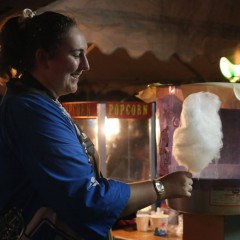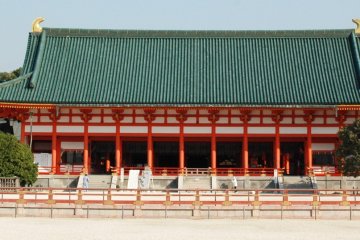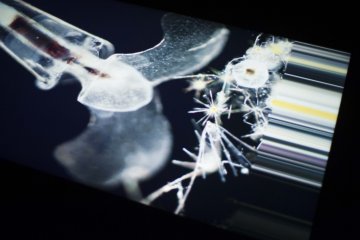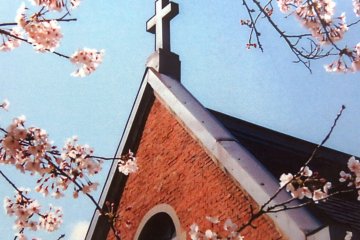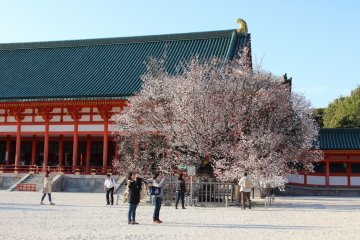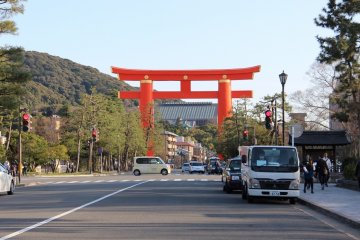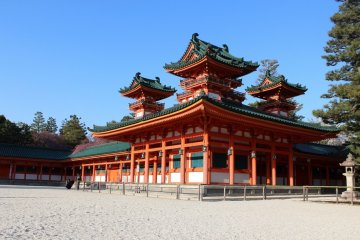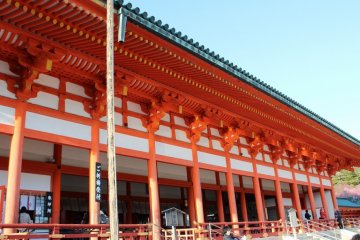Around the end of the Edo period (1603-1868) and the beginning of the Meiji Restoration (1868-1912), many large changes occurred. For just under a thousand years, Kyoto had sat as the center of Japan, but its decline was becoming a reality, as the emperor moved the country's capital city to its present location, Tokyo around the year 1868.
Feeling an impending sense of doom for the future of the city, Kyoto's governor decided to erect Heian Jingu Shrine, to mark the 1,100th anniversary of the city having become Japan's capital. It was completed in 1895, making it a relatively new shrine, and interestingly, it was created as a 6/10 scale model of the Heian Period imperial palace. Visitors can take a leisurely stroll through the grounds.
The spirit of Emperor Kanmu, the 50th emperor of Japan and the first ruler in this city, is enshrined at Heian Jingu Shrine. Later, Emperor Komei, the 120th emperor last one to rule from Kyoto, was also enshrined here.
Finally, to protect the three open sides of Heian Jingu Shrine's replica of the Council Hall of the Imperial Palace, a scenic garden park complete with a pond and walking path was added, for the enjoyment of visitors to the shrine.


